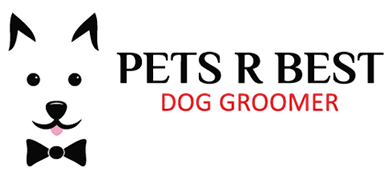Dog Grooming FAQs
Going to the groomers is a big day out for your dog. They are used to playing, sleeping and spending their days in familiar surroundings.
Pets R Best aims to make dog grooming a calm and stress-free experience for your dog. Your dog’s welfare and happiness is the first and most important concern.
Grooming is a vital part of the health and wellbeing of a dog. All breeds require daily grooming – how much depends on the age, breed and health of the dog.
Regular grooming:
- Helps ensure a dog is healthy and comfortable;
- Decreases the chance of various health problems, such as thrush, scratches and other skin problems;
- Ensures general cleanliness of the dog;
- Monitors the dogs health by checking for cuts, swelling, lameness or changes in temperament;
- Forges a closer bond between dog and owner; and
- Reduces infestation load of external parasites on skin.
It is important to discuss any concerns with your groomer at the beginning of your appointment so they can be addressed.
Many pet owners can be confused about the difference between grooming and clipping.
Grooming includes bathing, combing, brushing, nail clipping, plucking hair from ears, clipping and parasite control.
Clipping on its own is generally only done to dogs whose hair continuously grows and is considered only one step in the grooming process.
Dogs with heavy coats shed all the time. The main shedding seasons are in the spring and autumn when a new coat comes in. To manage the shedding, brush these dogs often, and consider using a shedding blade to pull out dead fur, this is called deshedding. A groomer or vet can show you how.
Without regular grooming, an undercoat can mat down painfully against a dog’s skin. A good deshedding is done during and after a bath. In the interim, you can use a shedding blade or a product called the Furminator, which removes large amounts of fur from your dog.
Your dog needs regular 4 to 8 week appointments with a groomer and regular brushing between appointments. This kind of regular attention enables your groomer to devote more time and effort to beautifying your dog, rather than de-matting and trying to salvage a neglected coat.
Your dog is most likely suffering from fleas, allergies, dry skin or fly bites. Using the wrong shampoos can cause dry skin and fly bites are more common at certain times of the year.
It is quite common for dogs with long, floppy ears to suffer ear infections. Signs of an ear infection include redness in the ear, a yeasty smell in the ear, continuous scratching of the ears and they may be tender to touch.
Nail trimming is essential for maintaining your dog’s good health. If a dog’s nails are allowed to grow, they will curl over into a spiral shape, walking will become increasingly painful to the dog as they grow, putting pressure on the dog’s toes.
Uncut nails may curl so far that they pierce the paw pad, leading to infection and pain. If you don’t trim your dog’s nails on a monthly basis, the quick will grow along the nail, making it nearly impossible to cut properly.
If you choose not to use a groomer for your dog’s nail care, it is much easier to file than snip. But if you’re comfortable with clippers, below are some basic pointers to help:
- Ask your vet or groomer for a tutorial before you trim at home;
- Nail growth varies with each dog depending on lifestyle. They should be trimmed, at minimum, every four weeks;
- Use a nail clipper recommended by your vet or groomer.
It is necessary to brush your dog’s teeth to clean the film and food from your dog’s teeth to prevent decay and freshen their breath. At Pets R Best teeth brushing is done in the bath, with their own personal toothbrush, which are filed away for future use. We use canine cinnamon and tea tree toothpaste to freshen your dog’s breath.
If your dog struggles when you groom him, don’t give up! Practice positive desensitisation techniques with lots of treats, don’t butt heads with your dog by hovering or grabbing or holding his body against his will.
Let him sniff the comb and then reward him with a treat. Touch various parts of his body with your hand and tools and reward with a treat. Move him into grooming positions and reward with a treat.



